—Åsa Boholm[1]
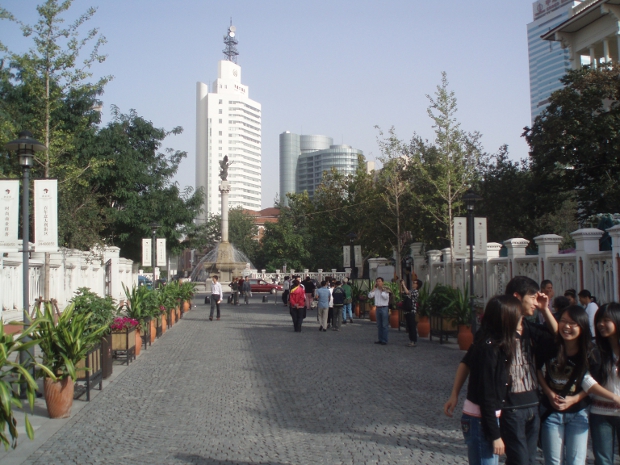
Fig.1 Juxtaposition of spaces: the former Piazza Regina Elena, today known as Piazza Marco Polo in Tianjin's New I-Town, surrounded by new office buildings. (Photograph: Maurizio Marinelli, September 2009)
At the dawn of the twenty-first century the attention of the world is absorbed in its observation of and reporting on a particular version of China, one of a country that collectively exposes (and imposes) itself as a re-emergent peaceful nation. The party-state media portrays China as a harmonious constellation, and it works to allot China a central position in the global geopolitical planetarium. At the same time, the gaze of both Chinese and world observers alike is transfixed by three megalopolises and their self-representations. These are cities that have been, and still are, undergoing prodigious socio-spatial transformations, all of which have been accelerated on the eve of mega-events: the Beijing Olympics (8-24 August 2008), the Shanghai World Expo (1 May-31 October 2010) and the Asian Games to be held in Guangzhou this year (12-27 November, 2010).
The competition among these metropolises to create globally recognized ‘city brands’ has been intense, sometimes verging on what one could call a ‘great cities on display’ reality show. All three places literally aim to ‘show and tell’, both on a domestic and on an international level. It is self-evident that Beijing used the 2008 Olympics to position itself as representing the ‘new’ history of the entire nation.[2] Equally, in 2010 Shanghai is capitalising on the World Exposition to re-centre the focus from the city-as-nation onto the city itself, with the aim of reaffirming the uniqueness of Shanghai’s version of originality and progress. For its part, Guangzhou is using the 2010 Asian Games to promote specific inter- and intra-regional trade opportunities, which are centred around the tripartite megalopolis Guangzhou-Shenzhen-Hong Kong.
On the ground the urban space becomes the elected showcase used to exhibit unabashedly three particular success stories, respectively: the tale of the nation ‘aligning its tracks with the world’ (yu guoji jiegui 与国际接轨), something embodied in Beijing’s ‘dream come true’; the positive narrative of an ultra-modern Shanghai, which epitomizes the idea that ‘Living in the city is better’ (chengshi, rang shenghuo genghao 城市,让生活更好); and, finally, the triumphalism of the Pearl River Delta underpinned by the achievements of three decades of urban reforms, with Shenzhen as a centre. These relentless accounts of national and municipal pride breathlessly reiterate the ‘regeneration’ of the built environment, something that is in fact a kind of non-agricultural slash-and-burn strategy accompanied by a reformulation of policies that orchestrate a rewriting of local and national histories, as well as targeted (and ruthlessly tailored) cultural heritage preservation.
This issue of China Heritage Quarterly focuses on another megalopolis. It is a place that is understudied and often neglected, but a city that is nonetheless extremely important in the context of historical and cultural heritage preservation. We take as our focus the northern port-city of Tianjin 天津, a city that is striving to tell a particular ‘story’, a story based on its own reinterpretations of China’s historical and architectural past.
National Identity and Heritage
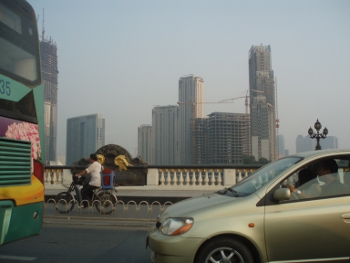
Fig.2 Image of the city from the bridge connecting the former Japanese and Italian concessions. (Photograph: Maurizio Marinelli, September 2009)
In a study of nineteenth-century France published in 1903, the pioneering Austrian art historian Alois Riegl observed that, ‘the cult of monuments’ constituted an essential part of new nationalist ideologies. Rielg emphasised how the particular ‘historical value’ of such monuments, which also corresponded to their art-value, essentially depended on the nation-state’s ability to preserve them in their original state. He remarked that, ‘It is the task of the historian to make up, with all available means, for the damage nature has wrought in monuments over time.’[3] The notion of heritage, and its association with the ideal preservation of antiquity and the past is in this approach translated into an appeal to maintain the authenticity of a site’s art-historical value. However, as Pierre Ryckmans has poignantly argued, a paradox lies at the heart of cultural longevity in China: moral cultivation and spiritual preservation ‘have most often been combined with a curious neglect or indifference (even at times iconoclasm) towards the material heritage of the past’.[4]
The Chinese authorities first promulgated new legislation concerning national heritage in 1982. The latest amendments to those earlier laws, approved in 2002, reiterated de jure strong support for material authenticity, and they advocated a minimum intervention in the conservation process, as opposed to the extensive replacement of old materials with new ones. The aim of this approach to heritage preservation was to ensure the safeguarding of the original aspect or mien of any particular site, as opposed to other strategies, which favour aggressive restoration and rebuilding. Regardless of this, this national legislation only offered a framework for reference and failed to provide detailed guidelines on implementation, in particular in relation to the 103 state-listed ‘historically and culturally famous cities in China’.[5]
Tianjin is one of those cities.
1404-2004, Tianjin at Six Hundred
Tianjin’s historical ambitions are associated with an important, although widely unnoticed, anniversary: the year 2004. It was indeed a year for celebration in Tianjin, since December 2004 signalled the 600th anniversary of the city’s foundation. The military fortress of Tianjinwei (天津卫) was established on 23 December 1404, when the Ming Emperor Yongle 永乐 (born Zhu Di 朱棣) renamed the former town of Zhigu (直沽 ‘straight port’) Tianjin, literally ‘The Son of Heaven’s River Crossing’ (
Tianzi du he zhi di 天子渡河之地). The renaming was primarily a commemoration of the fact that it was here that Yongle forded a crucial river to defeat his nephew, Zhu Yunwen (朱允炆, Emperor Jianwen 建文帝), whereupon he usurped the throne and proclaimed himself emperor. But Yongle’s symbolic renaming of the place also implied recognition of the crucial economic and geopolitical role Tianjin played in relation to Beijing, a city that in the first years of his reign became the new capital of the Ming, replacing Nanjing in the south. Tianjin acquired its historical, as well as strategic, significance because of its crucially important position, on the Hai River 海河, at the northern terminus of the main economic (and political) artery between northern and southern China: the Grand Canal, which guaranteed the transport of grain from the south to the capital.
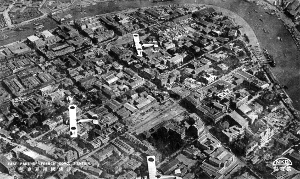
Fig.3 Eastern part of the French concession.
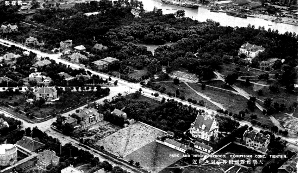
Fig.4 Russian concession.
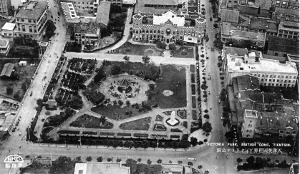
Fig.5 Victoria Park, British concession.
On 23 December 2004, a major exhibition entitled ‘Tianjin seen through a hundred years of China’ (Zhonghua bainian kan Tianjin 中华百年看天津) opened at the Tianjin Museum of History. It was a show that made the following claim: ‘Tianjin is a stage that displays different architectural styles—it is the epitome of modern Chinese society’. The exhibition promoted the city’s history as being emblematic of ‘the collision and fusion of Chinese and Western civilizations’.[6] The title of the show derived from the popular saying that, ‘If you want to understand ‘5,000 years (of Chinese civilisation) look at Xi’an, 1,000 years look at Beijing, modern China look at Tianjin’ (wuqian nian kan Xi’an, yiqian nian kan Beijing, yibai nian kan Tianjin 五千年看西安, 一千年看北京, 一百年看天津).
The Tianjin Municipal Party Committee’s Propaganda Department, together with the Tianjin Municipal Information Office and Tianjin TV produced a series of documentaries, which were broadcast on Tianjin TV and distributed as DVDs. One of them is entitled ‘Charismatic Tianjin’ (Meili Tianjin 魅力天津). The appellative 魅力 emphasises the charm and the charisma of the city; the concept could also be interpreted more broadly as representing the wondrous (meimiao 美妙) nature of the city, since the officially-sanctioned fascination of Tianjin is constantly linked to its ‘architecture of wonder’, both past and present. Indeed, Tianjin is a city with the greatest number of foreign-style buildings in China, and it is often referred to as a permanent ‘Exhibition of World Architecture’ (wanguo jianzhu bolanhui 万国建筑博览会), a claim that encapsulates the fact that the city boasts the simultaneous presence of different architectural styles in what amounts to a plein air museum (see LaCouture’s and Marinelli’s articles in Features in this issue). Between 1860 and 1945, Tianjin was the site of up to nine foreign-controlled concessions (zujie 租界), as well as being temporarily home to a multinational military government (1900-02) and a series of evolving municipal administrations.
The concessions covered an area of 15.5 square kilometers, eight times larger than the original ‘Chinese city’, with riverfront governed by foreign powers. Each concession included a residential area whose planning, road layout and public works system responded to the needs and expectations of its immigrant inhabitants. Putting the distasteful aspects of colonial occupation to one side, the concessions became in a sense ‘lifestyle showcases’ of their respective national identities. At the same time, each colonial power avowedly used its concession site to organise, promote and expand the commercial activities of the firms of its own nationality in China and more broadly throughout the region.
The architectural transformation of the city promoted specific values. New designs and the social organisation that they served, and fostered, redefined ways of living and relating. The new European-style buildings in the city became known as xiaoyanglou 小洋楼. This compound expression echoes the word xiyanglou 西洋楼, the term used to refer to the rococo and baroque marble 'Western Pavilions' designed by Jesuit missionaries for the north-eastern corner of the Garden of Prolonged Spring (Changchun Yuan 长春园, one of the precincts of Yuanming Yuan 圆明园 or The Garden of Perfect Brightness, often erroneously dubbed the ‘Old Summer Palace’ in English) during the reign of the Qianlong Emperor (r.1736-1795).[7]
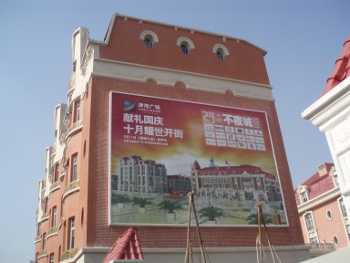
Fig.6 A new development on Jiefang Beilu. During the concessions era, this was the street where the foreign banks had their headquarters. (Photograph: Maurizio Marinelli, September 2009)
Today, despite its odious past associations, the colonial phase of Tianjin is actively re-interpreted as marking the beginning of the city’s globalisation. Over the last decade the urban planning strategy for Tianjin’s former concessions has combined the re-ordering and re-designing of foreign space in concert with Tianjin’s vaunting ambition to promote its globalising identity. The trope of Tianjin being a microcosm of the ‘World’ is powerful and it has assumed new connotations: visitors to Tianjin in 2010 could even stay in a new luxury development called ‘The World’ (Shijie 世界), where the designers have arranged dwellings in the shape of a world map (pace the bankrupt planners of Dubai World).
Tianjin’s global ambition is also used to attract foreign investors, as demonstrated by another TV documentary prepared for the 2004 commemorations: ‘Tianjin Binhai New Zone—An Important Player in the Invigoration of Regional Development (Tianjin Binhai xinqu—daidong quyu fazhande zhongyao liliang 天津滨海新区--带动区域发展的重要力量). A set of four commemorative DVDs entitled ‘Tianjin: Its Past and Present’ (Huashuo Tianjin 话说天津) was also produced that year, thanks to a joint effort of the local government Information Office, Tianjin TV and Tianjin Shenghua International Advertising Development Co. Ltd. Furthermore, the plethora of general books on Tianjin history and culture published during the commemorative year tirelessly emphasised the city’s international urban identity and its origins in the nineteenth century.
Tianjin’s Singularity
The literature that emerged on the eve of the 600th anniversary stressed Tianjin’s distinctiveness. This trend had been increasing from the year 2000, when the focus on Tianjin’s specificity, with its own mode of historical rewriting and re-marketing, was intensified as part of an attempt to differentiate the city from the Chinese capital. Historically, due to this proximity, Tianjin had both benefitted and suffered from its role as Beijing’s ‘political backyard’ (zhengzhi houyuan 政治后院). Nonetheless, the recent spate of Tianjin publications also reveals a progressive tendency to ‘learn from’ the experiences of Beijing, Shanghai, Guangzhou and Shenzhen—all cities that have undergone what are regarded as the first two waves of urban transformation. Tianjin is now riding the crest of the third wave, and the Tianjin Municipal Government wants to set a new standard, a new ‘model’ for urban renewal. The preamble of a book entitled Tianjin Image (Tianjin yinxiang 天津印象) reveals both inter- and self-referential discourses on the city:
This is a city immersed in but not fettered by history
This is a city endowed with but not obsessed with glories
This is a city cherishing its own assets while embracing opportunities
This is a city facing the vast sea and opening to the world
Tianjin: a famous city whose culture is rooted in history
Tianjin: a modern international port metropolis
Tianjin: a central city that is spearheading the rejuvenation of a
regional economy
Tianjin, one of the most enchanting cities in China.[8]
Tianjin’s new image is articulated in partially antagonistic relation to Beijing. From the very outset, Tianjin is described as a city ‘immersed in history’ (fuzailishi 负载历史). The use of a verb from the vocabulary of electrical engineering, one which literally means ‘loaded with history’, is calculated to convey a powerful image. In contrast, other cities are ‘fettered by history’ (beilishi jingu 被历史禁锢); the use of the passive voice suggests implicitly a critique of cities which are imprisoned by their past, à la Beijing.
Tianjin’s power-holders are acutely aware of their city’s history and regard its architectural heritage as having accrued certain kinds of economic and symbolic capital. Tianjin is thus vaunted as being different, unique. With its nine foreign concessions, Tianjin constitutes an unparalleled microcosm of the world, even when compared to other cities which were open to foreign trade and settlements during the late-imperial and Republican periods.
Tianjin’s concessions are sites that developed during various phases of modern European mercantile and colonial activity. The city was opened as a treaty port in 1860, when British, French and American concessions were established. The second wave of concessions was created during the period of aggressive 1890s’ ‘New Imperialism’. Furthermore, the concessions’ latter histories developed in the context of an emerging new East Asian Order, one focussed on the rise of Japanese power and Japanese imperialism, and then in the decades of nascent and triumphant Chinese nationalism after 1917.
Legislated Heritage

Fig.7 The struggle for survival: The Church of the Holy Spirit in the middle of a building site in the New I-Town. (Photograph: Maurizio Marinelli, September 2009)
In 2005, the Tianjin Municipal Government launched a fifteen-year cultural heritage preservation plan (2005-2020). On 20 July 2005, the standing committee of the city’s People’s Congress adopted and promulgated ‘Regulations to Protect Tianjin’s Historical Architecture (Tianjinshi lishi fengmao jianzhu baohu tiaoli 天津市历史风貌建筑保护条例). These regulations came into force on 1 September that year and in tandem with them the Municipal Government approved a list of 615 ‘historically inflected buildings’ (lishi fenmao jianzhu 历史风貌建筑), which cover an area of 955,000 square metres. The buildings are divided into three groups: sixty buildings ‘of special importance’ (teshu baohu 特殊保护), are to be protected at any cost, 162 are considered ‘of key value for protection’ (zhongdian baohu 重点保护), while 393 are defined as being worthy of ‘general protection’ (yiban baohu 一般保护). The 615 buildings are distributed across the fifteen districts and counties of the city. As part of the city’s general urban plan (Tianjinshi chengshi zongti guihua 天津市城市总体规划) in March 2006 the State Council approved a ‘Plan for the Historical and Cultural Prominent City’ (Tianjin lishi wenhua mingcheng guihua 天津历史文化名城规划). This plan recognised fourteen protected historic cultural areas (Lishi wenhua baohuqu 历史文化保护区), six of which were classified as national-level key protected sites (Guojia lishi fengmao jianzhuqu 国家历史风貌建筑区).
Significantly, an article recently published in the influential paper Southern Weekend (Nanfang Zhoumo 南方周末) criticised the destruction of buildings in Tianjin that have ‘no defined status’ (shenfen buming 身份不明) in the famous Five Street Area (Wudadao 五大道). The author pointed out that even Chairman Mao Zedong had praised Tianjin’s xiaoyanglou, along with the courtyard houses (siheyuan 四合院) of Beijing.[9]
The criteria for determining just which features of a building classify it ‘historically inflected architecture’ are contained in the third article of the 2005 Regulations: ‘the age of the building is over fifty years; (the building has) historical, cultural, scientific, artistic and humanistic value that reflect the characteristics of a certain period and include local features in its construction.’ It is significant that most of these buildings belong to Tianjin’s colonial period (1860-1945), and therefore are generally of ‘foreign’ design. During that era, the blueprint for Tianjin as a ‘modern city’ emerged from Western minds. The form, function and meaning of the cityscape reflected colonial modes of thought and conceptualisations of power. Indeed, the city became something of a testing ground for a multi-faceted pedagogical project. On the one hand, the foreign powers co-existing in Tianjin produced mimetic representations of their various countries of origin in a literally concrete form. On the other hand, such cultural reproduction not only reflected various intentions to particular national identities, but also proposed, exposed and imposed, in microcosmic form, global discourses of imperial ambition.
The Heritage of Heritage
The recent transformation of the former foreign concessions demonstrates how the concept of cultural heritage preservation is being encompassed in a broader modern identity-building strategy. This is being undertaken by means of a selective interpretation of ‘fame’ as a crucial criterion for the definition of architectural, and by extension cultural heritage, importance. The attentions of the office charged with this process (the Fengmaoban 风貌办) have been directed at the residences of ‘famous Chinese residents’. This is in keeping with the articulation of particular sites where important warlords and political thinkers (such as Liang Qichao 梁启超) once lived. Many of these sites are now reserved exclusively for guided tours or for retail use (see the article on the New I-Style Town in Features) after former occupants have been forcibly relocated.
The key slogan of the ‘Volunteers for the Protection of Architectural Heritage in Tianjin’ (Tianjinshi jianzhu yichan baohu zhiyuanzhe tuandui 天津市建筑遗产保护志愿者团队, see Chen Songchuan and Du Mu in Features) is: ‘Protect cultural heritage and maintain the memory of the city’ (Baohu wenhua yichan, liuzhu chengshi jiyi 保护文化遗产, 留住城市记忆). Heritage first needs to be appreciated and as a corollary protected. This principle is also advocated by the Centre for Chinese Cultural Heritage Conservation (see Xu Subin and Aoki Nobuo’s article, also in Features).
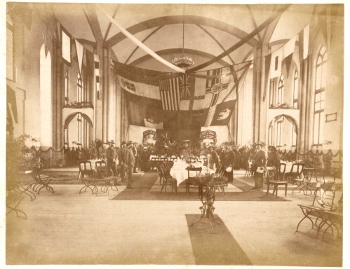
Fig.8 Interior of Gordon Hall prior to the opening banquet (1889). Collection Otto Franke (Berlin). Courtesy of Renata Fu-sheng Franke.
The activities of such groups reflect the ‘present-centredness’ of heritage work. Testing his theoretical proposition to focus on the processes and practices of heritage, namely ‘heritage-isation’, David Harvey has opened a space for a longer historical analysis of the development of heritage.[10] Heritage is not, or should not only be, valued for its economic worth alone. It should not merely lend itself to commercial exploitation. Neither does its value, as is so often the case in post-modern theme parks, lie merely in its success as part of an income-generating leisure industry.[11] As an historical process ‘heritage-isation’ offers people a possibility to resist the homogenising dynamics of city planners. Without such resistance, heritage risks becoming nothing more than a consumable product, just another thing to be hawked as representing not the past, but the new and the future.
The juxtaposition of multiple architectural styles in Tianjin offers a distinctive opportunity to examine how cultural heritage can contribute to the formation of new, and transforming, urban identities.[12] At this historical juncture, when the architects of Tianjin’s identity politics are marketing the colonial past as the advent of the city’s globalisation, the institutions concerned with cultural heritage find themselves at a crossroads: they may choose carefully to weigh their options, negotiate and select between the extreme of place re-branding (one that risks annihilating historical memory forever), or they may pursue a creative engagement with the place based on an understanding that the past informs the present even as the present reconstructs the past.
Acknowledgements:
This editorial essay, as well as my other work in this issue of China Heritage Quarterly, are based on research supported by the British Economic and Social Research Council, whose help is gratefully acknowledged [Grant: RES62-23-1057]. I am particularly grateful to the Editor, Geremie Barmé, for his invitation to guest edit this issue, and also for his extensive and detailed editorial comments and suggestions in relation to the present article as well as the other material related to Tianjin herein. I would also like to thank Daniel Sanderson for his tireless assistance, as well as his translation of Du Yu’s introduction to the Tianjin Volunteers, and Duncan Campbell who kindly offered to translate Aoki Nobuo and Xu Subin’s work.
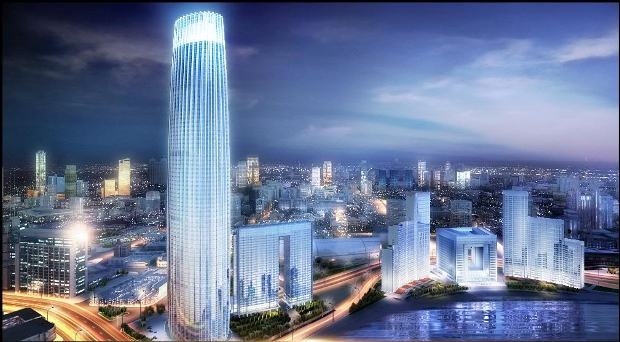
Fig.9 An idealized representation of the future Tianjin World Financial Centre.
Notes:
[1] Åsa Boholm, ‘Reinvented Histories: Medieval Rome as a memorial landscape’, Ecumene, vol.4, no.3 (1997):267.
[2] As Geremie Barmé has pointedly argued, the 2008 Beijing Olympics became an opportunity for China ‘to tell its story to the world’, with mixed results. See Barmé, ‘China’s Flat Earth’, The China Quarterly, vol.197 (March 2009): 64-86.
[3] Alois Riegl, ‘The Modern Cult of Monuments: Its Character and Its Origin’ [1903], Oppositions 25 (Fall 1982): 21-51, at p.34. This position seems to echo Walter Benjamin’s famous 1917 definition: ‘The historian is a prophet who is looking behind’. From Walter Benjamin, ‘The Metaphysics of Youth’, in Selected Writings, 1913–1926, ed. Marcus Bullock, trans. Rodney Livingstone, Cambridge: Belknap Press, 1996, p.6.
[4] Pierre Ryckmans (Simon Leys), ‘The Chinese Attitude Towards the Past’, The 47th George Ernest Morrison Lecture in Ethnology (1986), reproduced online at:
http://www.chinaheritagequarterly.org/articles.php?searchterm=014_chineseAttitude.inc&issue=014.
[5] Agnew, Neville, and Martha Demas, eds., Principles for the Conservation of Heritage Sites in China: English language translation, with Chinese text, of the document issued by China ICOMOS, Los Angeles: The Getty Conservation Institute, 2004, online at: http://www.getty.edu/conservation/field_projects/china/china_publications.html. Accessed on 20 February 2010.
[6] See: http://www.tjbwg.com/newEbiz1/EbizPortalFG/portal/html/ProgramShow1.html?ProgramShow_ProgramID=c373e9190ce35f668f6fb478f321a720. Accessed 10 February 2005.
[7] See Geremie R. Barmé, ‘Between Ruination and Restoration’, Editorial to the December 2006 issue of China Heritage Quarterly devoted to the Garden of Perfect Brightness, at: http://www.chinaheritagenewsletter.org/editorial.php?issue=008.
[8] Chen Weiming, Gao Dapeng (eds.), Tianjin yinxiang, Tianjin: Tianjin Renmin Meishu Chubanshe, 2006, p.3.
[9] 谁在拆五大道? 保护,还是破坏?南方周末, 20 September 2009, available online at: http://www.infzm.com/content/28796. Accessed on 24 February 2010.
[10] David Harvey, ‘Heritage Pasts and Heritage Presents: temporality, meaning and the scope of heritage studies’, International Journal of Heritage Studies, vol.7, no.4 (2001): 319-338.
[11] Michael Dear, The Postmodern Urban Condition, Oxford: Blackwell, 2000, p.145.
[12] Emblematic of this is the presentation of the Tianjin Museum of Modern History (Jindai Tianjin Bowuguan 近代天津博物馆), founded in 2002 by the Tianjin writer Hang Ying (航鹰): ‘History has left to Tianjin a unique phenomenon of cultures belonging to different countries assembled together in one place’ (Lishi wei Tianjin liucunle geguo wenhua huicuide dute xianxiang 历史为天津留存了各国文化荟萃的独特现象). See http://www.discovertianjin.org/title.htm. Accessed on 22 February 2010.






